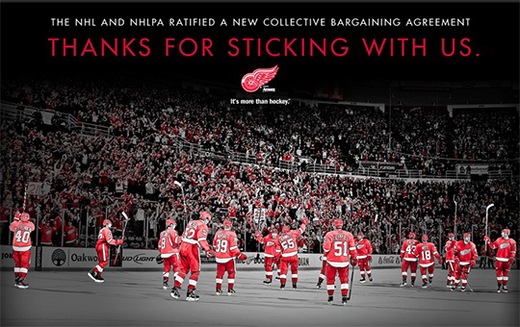You believe that your franchisor has intentionally, with little or no justification, inflicted serious economic harm on you and other franchisees.
A group of franchisees has formed The Fight Association, and wants to hire the biggest baddest franchisee trial lawyer to punish the franchisor. The Fight Association's trial lawyer fires a couple of strongly worded missives to the franchisor, with the message: Capitulate or be Sued.
Some other franchise owners, horrified by the damage to the relationships, to the brand, and their ability to resell their own units, want some form of negotiation, discussion or mediation with the franchisor. Even in face of the clear economic damage inflicted by those working at the franchisor's corporation.
Should you fight or negotiate?
There are three important lessons for franchisees and their associations to learn from Mnookin's research.
1. Fight your franchisor only when they have shown themselves to be an unreliable negotiating partner.
2. It is smart to start bargaining from outcomes that neither party can from either the litigation or arbitration process
3. The franchisee community as a whole needs to commit resources to continual training in interest based communication. If interest based negotiation is going succeed over the long haul, you need to commit funds to training.
Background- Managing Mental Traps
Robert Mnookin is the Director of Harvard's Program on Negotiation, and so it unsurprising that he frames the advice in his book as a way of managing two types of mental or intuitive traps, one set of traps which promotes fighting and the other which promotes cooperation.
(This is conceptually similar to one of the original themes from the Harvard Program on Negotiation: negotiation is the rational management of the inherent tension between claiming value and creating value, explored more throughly in The Manager as Negotiator, Lax and Sebenius.)
Mnookin identifies (6) mental traps in Chapter 1 of the book, and then goes on to evaluate (7) major confrontations in which one or both sides could reasonably see the other as the devil; someone who had intentionally inflicted serious harm with little or no justification. (Of particular interest to the franchise community is the chapter 8, "Disharmony in the Symphony".)
Here are Mnookin's traps, which shape the perceptions of the conflict
1. Tribalism involving an appeal to group identity, creating an in-group. It is us against them. Universalism is at the opposite end of the scale, the tendency to overlook important differences in culture, history and group identity. "Why it is just business, after all."
2. Demonization is the tendency to see the other party's action completely defined by being rotten or bad to the core. Contextual rationality is the impulse to find reasonable explanations for individual bad behavior.
3. Dehumanization is way of putting the other party outside normal moral concerns, treating them as a mere object. The other end of this spectrum is one of Redemption: everyone deserves a second chance.
4. Self-righteousness is the tendency to frame the problem in which you are blameless, but the other fellow is entirely to blame for this problem. The other extreme is to see parties always being Equally at Fault for a conflict.
5. Zero-sum trap in which my interests necessarily are in opposition to yours. At the other end is the view that there is always an Win/Win which makes both parties equally well off.
6. The Fight/Flight response, which for the franchisee community would be litigate or sell. At the other end of spectrum, we have Policy of Accommodation.
Finally, there is the call to battle in which the trial lawyer has to call out the franchisee troops for a battle with the franchisor in using the language of war, and the techniques of demonization, tribalism. and others.
The (3) Lessons: When to fight, How to Negotiate, and How to Follow Through.
(1) When to Fight - Only Fight as a Group with an Unreliable Business Partner.
In Chapter 5, Mnookin, relying upon recently declassified reports, examines Churchill's decision not to negotiate with Hitler. He does a remarkably good job of situating us in a world in which Hitler's manifest evil is not yet apparent and Churchill's War Cabinet is unmoved by Churchill's emotional appeals.
It is not known yet that Dunkirk will be a resounding success, that England will win the Battle of Britain, nor that Hitler will uncharacteristically hesitate for many months about deciding to cross the English channel.
A Britain that had insufficient resources to win a war on their own, seemingly without powerful allies, had to seriously consider whether a separate peace might be worth entering into.
Churchill was convinced that Germany was aiming at enslaving England, but his War Cabinet was more persuaded that Germany's goal was only more territory in Eastern Europe.
Since both England and Germany shared a hatred of Communism, it made sense to the War Cabinet that Germany would have to turn east and face down Russia.
What was critical, according to Mnookin, was that Churchill eventually framed the problem this way: if the negotiation was to fail, and this was likely given Hitler's total unsuitability as a bargaining partner, then British morale would be so undermined that they could not credibly commit a fight to the finish. The failed attempt at negotiations with Hitler would end in surrender.
This strikes me as correct. If the party you want to negotiate with has shown themselves to be utterly capricious, unable to be counted upon, then the very attempt at negotiation, should it fail, will undermine the group's commitment to prolonged litigation.
Fortunately, I don't believe that many franchise systems -although there are a few- have franchisors who have absolutely no credibility as a bargaining partner.
My own view, is that systemic challenges are not well suited to litigation, but the franchisor who owns little or no units will have always have trouble convincing the franchisee community to adopt systemic changes, when there has been a local history or either mistrust or bad decisions.
It will be hard for the franchisee community in these cases not to see the franchisor as acting intentionally to harm their own economic interests and misplaced litigation is the likely result.
(2) How to Negotiate out of Shadow of the Law
In 1983, after a bitter commercial fight, IBM and Fujitsu concluded an agreement over the extent to which Fujitsu could use, copy, or otherwise reverse engineer IBM's operating system. One year later, the agreement was in shambles - with each side reasonably convinced that the other had acted intentionally to inflict serious economic harm on the other with out justification. Devils!
For the next 10 years, Mnookin would play an important role both as arbitrator and mediator in both settling and assisting the parties to settle their dispute.
At one point, Mnookin and the other mediator, Jack Jones, had to convince each party of viability of IBM giving Fujitsu the right to inspect, in a very secure environment, IBM's source code. This was needed if Fujitsu was going to be able produce a compatible IBM OS, without infringing or copying on IBM's source code.
IBM could have rejected this deal by saying "Are you crazy, Fujitsu is a major competitor! The 1983 agreement doesn't give them the right to inspect our source code and they will never get that in arbitration. Screw them."
Fujitsu might have also rejected the deal because the restrictions placed on them by the secure environment were highly disruptive to their own programming practices.
But what both parties, even though intense rivals, came to see was that starting from a point which was not available through either litigation or arbitration produced an agreement superior to what any party could get through litigation or arbitration.
This is important advice: don't start bargaining from only those outcomes possible from litigation or arbitration. Both the franchisor and franchisee community need to focus on what would be the best outcome for all of them, and identify what steps need to be taken to get there - especially in the face of previous intractable conflict.
(3) Follow Through and Interest Based Negotiation Training
The last lesson is very important for the franchise community. In 1997, Mnookin was contacted after a bitter strike by San Francisco orchestra.
The orchestra's bargaining committee was itself bitterly divided, barely on speaking terms. Management's representative was seen as a destructive bully, intent on getting his own way.
"Moreover, the musician's relationships with one another were badly strained. They were traumatized. They had no authority structure, no strong leadership in collective bargaining."
Mnookin was able, in the short term, to introduce both sides to interest based negotiation, which involves both active listening and the management of creating value versus claiming value techniques. Both parties took part in the standard Harvard negotiation program, with some excellent short term results.
The parties spent, in 1998, six days in total to come to a new contract. However, they had spent almost 14 month in communication and in joint sessions prior to the bargaining at the table. "For complex negotiations, with critical conflicts behind the table, this is an appropriate ratio." says Mnookin.
However, 6 years later the symphony negotiating committee shunned additional training in interest based techniques, despite having new members who did not have these skills.
It's new attorney was suspicious of interest based negotiation and had argued in public that collective bargaining was essentially adversarial in nature and that the best deals could only be made when everyone was facing collective disaster.
Interestingly, the former management representative, Pastreich summarizes the value of interest based negotiation best:
"The greatest value of adversarial negotiation might be the opportunity it gives musicians to express anger and frustration accumulated during 3 years of doing a job that, by its very nature, allows them relatively little control over their working lives, while the greatest value of interest based bargaining might be the opportunity it gives musicians to work with managers and board members at solving problems in an atmosphere of teamwork and cooperation."
The parties did not make the necessary long term commitment to interest based negotiation, so reverted to the ordinary form of collective bargaining - a process which favours the ill prepared, but obstinate negotiator.
Conclusion
Franchise relations are not going to change overnight, but many franchisee associations, franchisors, and counsel can learn a great deal from Mnookin's book on negotiation.
Finally, the thoughtful exercises Mnookin prescribes in managing the (6) traps are worth reviewing to see which could be employed in your franchise system.
For the 5 Most Fascinating Stories in Franchising, a weekly report, click here & sign up.




